| Home > Policy > White Paper, Notice, Announcement > White Paper > JAPANESE GOVERNMENT POLICIES IN EDUCATION, SCIENCE, SPORTS AND CULTURE 1996 > Priorities and Prospects for a Lifelong Learning Society Chapter 2 Section 3 2 | ||
As discussed in section 1, many people regard learning as an end in itself. People do not always consider ways to put their learning achievements to use.
Respondents to the 1992 "Public Opinion Survey on Lifelong Learning" were asked how they were using their learning achievements. The leading response was "enriching life" (46.2%), while "in work" scored 26.6% ( Figure 2.2 ). In the 1996 MESSC survey, which covered people involved in structured and ongoing learning, the most common reason for learning in groups, local government lectures and courses, and culture centers was "personal fulfillment and enjoyment" ( Figure 2.6 ).
An increasing number of people, however, are eager to apply their learning achievements and the knowledge they have gained through activities in the wider community. Many are active as volunteers or instructors.
Apart from work and job hunting, the most likely way of using learning achievements is helping other people and the community. The most obvious example is volunteer activities. In the 1996 MESSC survey the most important motivation for many learning methods was "desire to contribute to others and the community," which was cited by around 10% of respondents ( Figure 2.5 ). In the 1993 "Public Opinion Survey on Lifelong Learning and Volunteer Activities," respondents were asked how they wished to use the experience, knowledge, and skills that they had gained. While 40.2% cited "work and job hunting" and 39.6% "to enrich personal life," 17.2% chose "to help other people and the community," 12.5% "community activities," and 9.0% "to guide others in learning, sports, and cultural activities" ( Figure 2.48 ).
In its 1992 report the Lifelong Learning Council presented three perspectives that indicated a close relationship between lifelong learning and volunteer activities. First, volunteer activities can themselves be a form of lifelong learning that leads to self-development and self-fulfillment. Second, lifelong learning can provide the knowledge and techniques needed for participation in volunteer activities, while volunteer activities offer a way of utilizing and enhancing learning achievements. Third, lifelong learning can be promoted more effectively through volunteer activities designed to support lifelong learning.
Interest in volunteer activities has been rising since the Great Hanshin-Awaji Earthquake of January 1995. One of the areas covered in the NHK (Japan Broadcasting Corporation) "Survey of Society 50 Years After World War II" was attitudes to post-disaster volunteer activities. The results of the June 1995 survey show an increased willingness to participate in voluntary activities when compared with the results of the June 1994 survey. The percentage of participants who were "eager" or "somewhat willing" rose from 59.1% to 62.8%, while the percentage who were "somewhat unwilling" or "totally unwilling" fell from 35.8% to 31.5%. The combined percentage of responses for "eager" and "somewhat willing" increased from 48% to 67% among people in their twenties and from 55% to 70% among those in their thirties ( Figures 2.49 , 2.50 ). Clearly there is growing enthusiasm for volunteer activities as a way of utilizing the knowledge and know-how gained from learning activities.
There are now facilities that actively accept volunteer activities as a channel for using knowledge and skills gained through learning activities. The National Science Museum has "education volunteers" to explain its exhibits, and volunteers are also welcomed by central government social education facilities, such as national youth education facilities and the National Women's Education Centre. Local government organizations, too, are gradually starting to use volunteers in their social education facilities, such as citizens' public halls, museums, and libraries, as well as in schools.
Throughout Japan, volunteer activities are being developed in response to a variety of issues relating to the community and daily life. While there is a growing interest in volunteer activities, however, that interest does not always lead to actual participation. In the 1993 "Public Opinion Survey on Lifelong Learning and Volunteer Activities," 61.9% of respondents indicated that they were "extremely interested" or "somewhat interested" in volunteer activities, but only 30.1% were "currently involved" or had been "involved in the past" ( Figure 2.51 ).
Some people utilize the knowledge and skills that they have accumulated through their learning activities by working in their communities as instructors. Many have successfully used their learning achievements as the foundation for participation as instructors in various projects, such as Toyama Prefecture's Free College and the Kiyomigata Collegiate School in Shimizu, Shizuoka Prefecture.
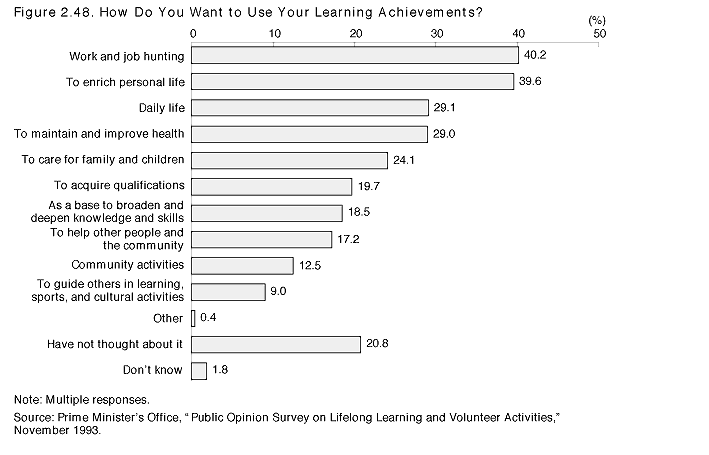
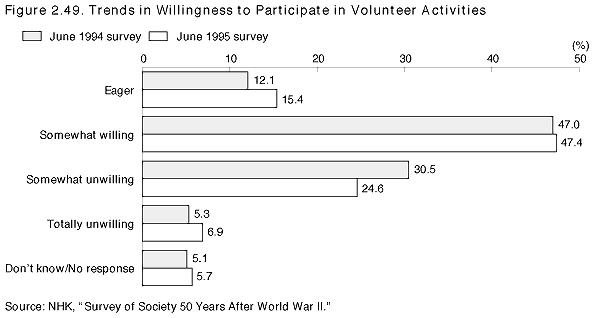
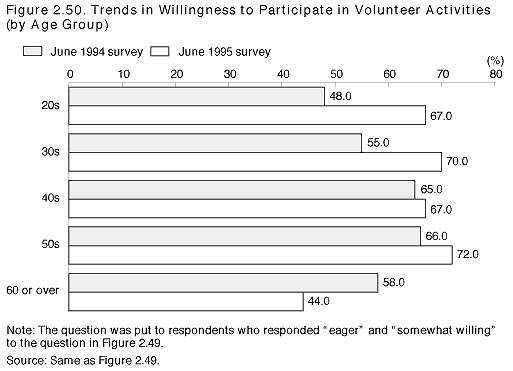
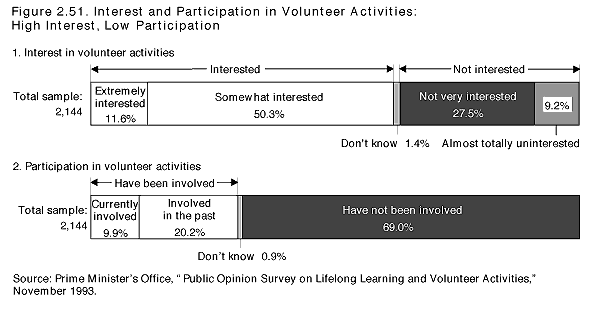
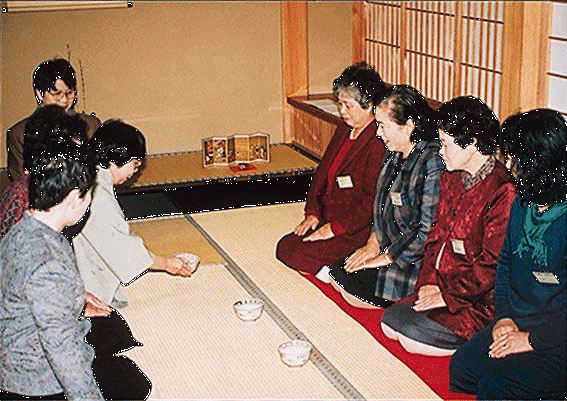
| Back to Top | MEXT HOME |